Join More Than 50,000+ Subscribers and get latest camera news and rumors
NEW CAMERA VIDEOS ON YOUTUBE
|
By admin, on April 4th, 2025
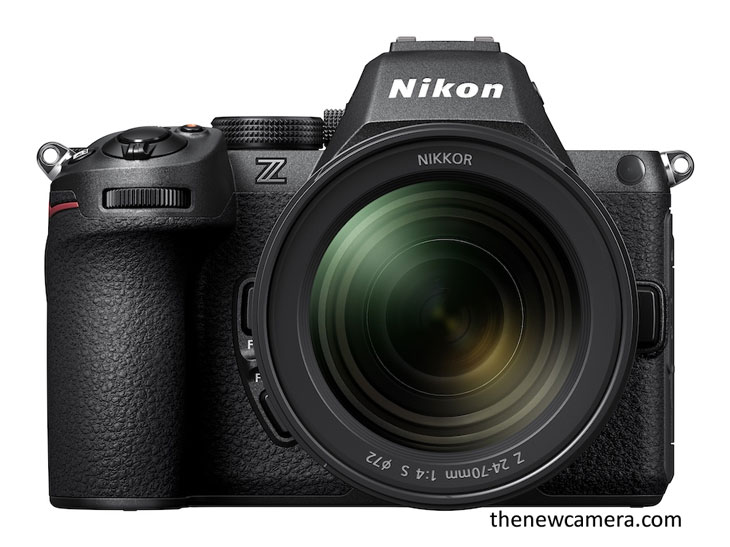
Let’s compare the Nikon Z5 II versus the Nikon Z6 II camera now. Z5 II camera was announced recently on April 2025 and features all the possible latest updates straight out from Nikon professional camera that include AI AF, that helps 9 different types of subject detection 🔎 automatically and it also has a dedicated bird eye auto focus mode that even cameras like the Nikon Z6 Mark III are waiting for an update, at the time I am writing this article on April 4, 2025.
Similarly, not only are the updates limited to AI auto focus, we also have 7.5 stops of image stabilizer that can be linked to the Nikon AF points to ensure the best stability possible in this segment.
The list goes on, so let’s compare side-by-side the advantages of the new Z5 Mark II camera compared to the Z6 Mark II.
| Feature |
Nikon Z5 II |
Nikon Z6 II |
| Image Processor |
EXPEED 7 |
EXPEED 6 |
| 9 AI Subject Detection |
Yes |
No |
| Bird Eye AF |
Yes |
No |
| Human & Animal Eye AF |
Yes |
Yes |
| AF sensitivity |
– 19 Ev |
– 5 Ev |
Design and build comparisons of both the cameras
Both cameras feature a magnesium alloy body, and both of them are weather sealed, so you don’t have to worry about using them outdoors in a kind of windy or rainy situation if you are using weather-sealed lenses. Other than that, the weight and the size are approximately the same. The biggest noticeable difference when you pick both of them in your hand is the kind of display screen the cameras are using. Z5 II is using a fully articulating touch display screen that helps you to create content on the go, whereas the Z6 Mark II camera features a tilting display screen, which limits its use to photographers only.
The other noticeable difference is a bright 3.69 million dot electronic viewfinder with 3000 nits of brightness.
Build & Display Feature Comparison
| Feature |
Nikon Z5 II |
Nikon Z6 II |
| Body Material |
Magnesium Alloy |
Magnesium Alloy |
| Weather Sealed |
Yes |
Yes |
| Display Screen |
Fully Articulating Touchscreen |
Tilting Touchscreen |
| EVF |
3.69 M-dot, 3000 nits |
3.69 M-dot (no brightness spec) |
| Top LCD Display |
No |
Yes |
| Ideal For |
Hybrid creators (photo + video) |
Photographers |
But apart from the almost identical controls and ports, both of them have dual card slots. In the camera, the additional advantage we get in the Z6 Mark II is the top display screen, and in the Z5 II, we don’t have that, so that makes the design difference complete.
Overall, both cameras are highly usable for photographers, but if you are a hybrid shooter, the Nikon Z5 Mark II camera is more usable design-wise due to its fully articulating display screen.
Photography features comparison
Nikon Z5 II and Nikon Z6 Mark II feature a bit different sensor readout speed, since the Nikon Z5 Mark II camera uses the sensor from Nikon Zf whose readout speed is faster than the Nikon Z6 II camera, resulting in better images while keeping away rolling shutter effect as much as possible.
Also, the continuous shooting speed of the new Nikon Z5 II with the help of the latest EXPEED 7 image processor goes up to 14 frames per second in JPG and RAW it’s up to 11 frames per second, and with upcoming updates, the mechanical shutter will support RAW up to 14 FPS. And if you use the electronic shutter of the Nikon Z5 II camera, you will get the continuous shooting speed of 30 frames per second, which is insane when compared to the Nikon Z6 II. In the Nikon Z6 II camera, the continuous shooting speed reaches 14 frames per second in 12-bit RAW, so it is also quite usable.
Burst Shooting & Sensor Speed Comparison
| Feature |
Nikon Z5 II |
Nikon Z6 II |
| Mechanical Shutter Speed |
14 FPS with 14 Bit RAW |
14 FPS (12-bit RAW) |
| Electronic Shutter Burst |
Up to 30 FPS |
Not available |
| Sensor Readout Speed |
Faster (from Nikon Zf) 24ms |
Slower 50.8 ms |
More than these two differences, the biggest difference is due to the presence of EXPEED 7 image processor, we are getting AI autofocus inside the new Nikon Z5 II camera, and with the help of that the camera can detect 9 different types of moving subjects automatically which also includes bird eye autofocus mode, specifically for wildlife photography.
Nikon Z6 Mark II camera does detect human and animal eyes but the autofocus algorithm isn’t updated that much to support AI autofocus just like we have in Nikon Z5 II.
So for photographers it’s not only important to push or uplift the continuous shooting speed to a new benchmark, but at the very same time, it’s also very important to perfectly do subject tracking.
Now let’s talk about the sensor shift image stabilization system. The Nikon Z6 Mark II camera provides up to five stops of shutter speed compensation, whereas the new Z5 Mark II camera features 7.5 stops of shutter speed compensation with the help of new IBIS tech. Not only limited to that—with the new EXPEED 7 image processor—now you can link your VR with camera autofocusing points so you get perfect stability and true 7.5 stops of IBIS from your camera.
| Feature |
Nikon Z5 II |
Nikon Z6 II |
| IBIS (In-Body Stabilization) |
7.5 Stops |
5 Stops |
| VR Linked with AF Points |
Yes |
No |
| Pixel Shift Mode |
Yes |
No |
The expandable ISO range of both the cameras is the same—up to 204800.
ISO Range Comparison
| Feature |
Nikon Z5 II |
Nikon Z6 II |
| Native |
64,000 |
51,200 |
| ISO Range (Expanded) |
Up to 204800 |
Up to 204800 |
| Low Light Performance |
Improved with AI AF |
Good with standard AF |
The low light AF sensitivity of the Nikon Z5 Mark 2 camera is up to -19.0 EV, the camera can do pinpoint AF in nearly dark situations, whereas the Nikon Z6 II camera is limited to -5 EV.
The pixel shift mode is also now available in the Nikon Z5 II camera. With the help of this mode, you can generate 96 megapixel of high-resolution images, but you have to keep your camera still on a tripod and the images will be processed by the Nikon NX software.
Verdict / Conclusion: Best still photography camera – Nikon Z5 II
Nikon Z5 II with its vari-angle display screen and 3000 nits of brightness EVF, not only from the design part but also from its core specification where we find ZF sensor which is quite bit faster while having the readout speed of 23ms, at the very same time the camera uses brand new EXPEED 7 image processor which implements AI autofocus algorithm directly coming from Nikon Z8 and Z9, moreover this the autofocus sensitivity has been upscaled to a next level where you can detect subjects up to -19 EV which was limited to -5 EV in Nikon Z6 II and the cherry on top thing is now the sensor-shift image stabilization is up to 7.5 stops and you can also link your IBIS with camera autofocus point which is completely a brand new thing and gives super stable shot.
Nikon Z5 II has been upscaled from upside down and every single core spec has been updated and now it’s even far better than Nikon Z6 Mark 2 camera so don’t do a mistake by buying the Z6 II get Nikon Z5 II it’s far more better than the Z6 II in terms of still photography.
| Feature |
Nikon Z5 II |
Nikon Z6 II |
| Autofocus Sensitivity |
AF works in -19.0 EV low light (better for dark scenes) |
Limited to -5.0 EV AF sensitivity |
| Pixel Shift Mode |
Available (generates 96MP high-res images via software) |
Not available |
| Image Stabilization (IBIS) |
Up to 7.5 stops with AF-point linked IBIS |
Up to 5 stops, no AF-point linked IBIS |
| Image Processor |
EXPEED 7 (new, faster, supports AI algorithms from Z8/Z9) |
Dual EXPEED 6 |
| Display & EVF |
Brighter EVF with 3000 nits, possibly better display |
Standard brightness |
| Sensor Readout Speed |
23ms readout, helps reduce rolling shutter |
50 ms |
| Design & Build |
Fully refined design with improved internals |
Older design |
| Subject Detection AF |
Inherited from Z8/Z9 (advanced AI tracking) |
More basic subject tracking |
| Price-to-Performance |
More value-oriented with high-end features |
Slightly older tech for the same/lower price |
Video Core Specification
Let’s compare the video specifications of both cameras. The Nikon Z5 Mark II camera can record 4:2:2 10-bit videos, 12-bit videos, and RAW videos. Both of these are significant advantages that allow you can internally record high-quality RAW videos in the camera.
So the Nikon Z5 Mark II camera gives you the next level of colour grading experience. The audio recording also includes linear PCM at 48 kilohertz, 24-bit for any MOV formats. Also, you get 16-bit for MP4, enhancing the overall audio quality for video production.
While researching, I have found that Nikon Z6 Mark II camera also supports linear PCM and AAC, but it does not specify specifically the bit depth beyond the standard 16-bit for AAC and its internal video recording is limited to 8-bit, so in that you are not getting the quality which the recently announced Nikon Z5 II offers.
The Nikon Z5 II camera offers RAW video capability internally inside the camera. You can record N-RAW videos up to 4K 30 FPS and even 4K 60 FPS in DX mode.
Nikon Z6 Mark II camera gives you limited 8-bit recording capability, and if you want to take out RAW videos, you have to use external recorders and switch it to the HDMI port, so that’s a very messy process, and even then, you are not getting the high quality.
Comparison Table:
| Specification |
Nikon Z5 II |
Nikon Z6 II |
| Max Video Resolution |
4K UHD at 60p (APS-C crop), 4K at 30p full width |
4K UHD at 60p (DX crop), 4K at 30p full width |
| 1080p Frame Rates |
Up to 120p |
Up to 120p |
| Slow-Motion |
1080p at 30p x4, 25p x4, 24p x5 |
1080p at 30p x4, 25p x4, 24p x5 |
| File Formats |
NEV, MOV, MP4 |
MOV, MP4 |
| Video Compression |
N-RAW (12 bit), H.265/HEVC (8/10 bit), H.264 (8 bit) |
H.264 (8 bit) |
| Internal Bit Depth |
Up to 10-bit (H.265), 12-bit (N-RAW) |
8-bit |
| External Recording |
Supports 10-bit N-Log, etc. |
10-bit N-Log, HDR (HLG), RAW via HDMI |
| Audio Recording |
Linear PCM 24 bit (NEV/MOV), AAC 16 bit (MP4) |
Linear PCM, AAC (16 bit) |
| ISO Sensitivity |
100-51200, up to 204800 equivalent |
100-51200, up to 204800 equivalent |
RED Luts
|
Yes |
No |
| Waveform |
Yes |
No |
| Lossless Clear Zoom (2X) |
Yes |
No |
| RAW Video |
Internal N-RAW up to 4K 30p |
External RAW via HDMI |
| Additional Features |
Time-lapse, electronic VR, time codes, N-Log, HDR (HLG), wave-form display, etc. |
Time-lapse, electronic VR, time codes, N-Log, HDR (HLG) |
I have found that the recently announced Nikon Z5 II camera offers RED LUTs made for upscaling your overall cinematography experience to the next level. At the very same time, those LUTs are very helpful even in wedding cinematography.
Additionally, your overall cinematography experience becomes more and more enjoyable when you get the support of Nikon’s latest AI autofocus technology as well as 7.5 stops of sensor stabilization to ensure stable and smooth shots.
Overall conclusion: The best video camera is the Nikon Z5 II.
The best camera, when we compare the core specifications of both, without a doubt, is the Nikon Z5 II camera, so we highly recommend you to get the Nikon Z5 Mark II camera over the Z6 II.
Nikon Z5 II vs Nikon Z6 II | Nikon Z5 II vs Canon R8 | Nikon Z5 II vs Nikon Zf | Nikon Z5 II vs Sony A7 III
Get the Nikon Z5 II camera from B&H Store | Adorama.com | Amazon.com
By admin, on February 21st, 2021
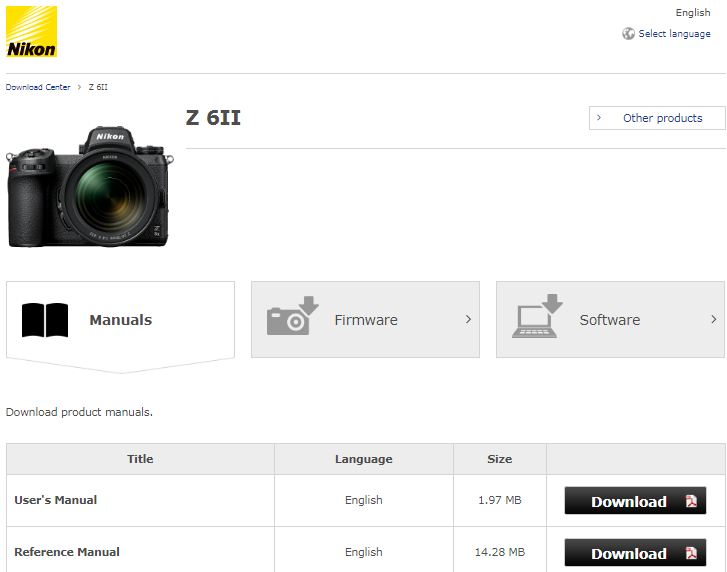
As we have told you earlier, Nikon will release its firmware update for enabling 4k 60p frame rate in Nikon Z6 II and improved eye AF in both Z6 II and Z7 II, finally, we have official confirmation from Nikon. Take a look at the Major upgrade details
Major firmware upgrades on Nikon Z6 II and Nikon Z7 II
- 4K UHD/60p*1 to Z 6II video recording options
- the performance of Eye-Detection AF on the Z 7II and Z 6II will increase with the update
- Blackmagic RAW on Video Assist 12G models.
- New update expands video editing options when using Final Cut Pro
Download links active from February 25
Nikon Z6 II 4K 60p Firmware Update Details
NIKON TO RELEASE Z 7II AND Z 6II MIRRORLESS CAMERA FIRMWARE VER. 1.10 ON FEBRUARY 25
MELVILLE, NY –
Nikon Inc. is pleased to announce that firmware Ver. 1.10 for the Z 7II and Z 6II full-frame (Nikon FX-format) mirrorless cameras, will be released on February 25.
Firmware Ver. 1.10 will add support for 4K UHD/60p*1 to Z 6II video recording options. Additionally, the performance of Eye-Detection AF on the Z 7II and Z 6II will increase with the update. The eyes of human subjects are detected even when the face of the subject is smaller in the frame than with Ver. 1.00, enabling smoother and more stable shooting.
It will also support RAW video output*2, *3 to Blackmagic Design external recorders*4 *5 for both the Z 7II and Z 6II, enabling recording*6 in Blackmagic RAW format as well as ProRes RAW format.
Firmware Ver. 1.10 supports a variety of video-recording workflows, responding to the advanced video production needs of professionals.
Furthermore, for the ProRes RAW video recorded to the Ninja V external recorder manufactured by Atomos, compatibility with the ISO settings and color temperature controls added to Apple’s Final Cut Pro Version 10.4.9 and later is supported. This expands video editing options when using Final Cut Pro.
If you have already purchased the RAW video output upgrade for your camera, updating to firmware version 1.10 will add support for Blackmagic Design external video recorders automatically*5.
For more information on the latest Nikon products, including the new Z 7II and Z 6II mirrorless cameras, please visit www.nikonusa.com.
*1When this option is selected, image area is fixed at the DX-based movie format, and movie quality is fixed at Normal.
*2The RAW video output function can be enabled by a Nikon service facility for a fee.
*3With the Z 7II, full-HD RAW video can be recorded using the FX-based movie format, and 4K UHD RAW video can be recorded using the DX-based movie format. When the Z 6II is used, recording of either 4K UHD or full-HD RAW video is possible with both FX- and DX-based movie formats.
*4The Atomos NINJA V and now the Blackmagic Design Video Assist 5″ 12G HDR and 7″ 12G HDR can be used to record Nikon RAW video in the ProRes RAW or Blackmagic RAW format, respectively. Operation is not guaranteed with recorders other than those noted above (as of February 18, 2021).
*5In a future update, Blackmagic Design will release a software update that adds the Nikon Z 7II and Z 6II as models supported for the recording of Blackmagic RAW on Video Assist 12G models.
*6RAW video output at a frame size/frame rate setting of 4K UHD/60p is not supported.
Overview of the RAW video output upgrade service (performed for a fee)
All trademarks are property of their respective owners.
By admin, on February 17th, 2021
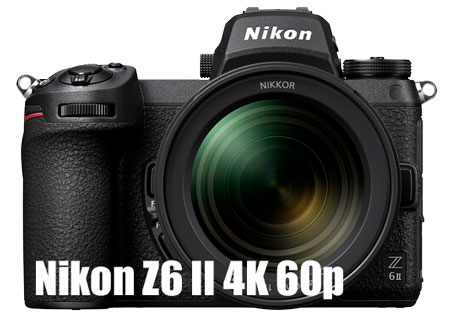
According to the latest rumors coming from a trusted Japanese source, Nikon will do an official announcement on Feb 18, which will have all the details related to the upcoming firmware update of the Nikon Z6 II & Nikon Z7 II camera. The Upcoming update will enable 4k 60p mode in the Nikon Z6 Mark II camera and it will also upscale the AI algorithms inside the Nikon Z6 II as well as the Nikon Z7 II camera.
Also see – Nikon Z6 vs Nikon Z6 Mark II
Get Nikon Z6 II from B&H | Amazon.com
Also, see Nikon Z30 Coming and Nikon will announce two DSLR cameras in 2021.
Follow us on our social pages FACEBOOK | TWITTER | INSTAGRAM to get live news + Nikon Rumors 24X7
By admin, on October 22nd, 2020
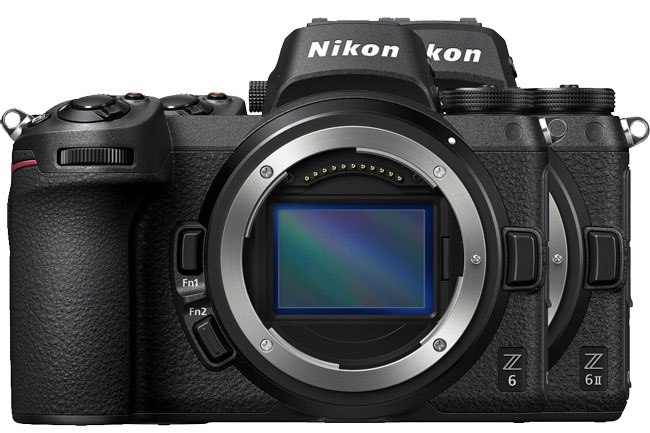
Get Nikon Z6 II from B&H | Amazon.com
Nikon finally announced, Nikon Z6 II arrived with the advance core specification compared to the Nikon Z6 camera.
1. Improved Card Slot and Battery Grip
Dual Card Slot: Dual card slot now available in Nikon Z6 II and Nikon Z7 II camera. Now you have one more SD card slot (UHS-II), for maximum versatility and backup.
Introduction of dedicated contact pin for battery grip: now you can use the MB-N11 battery pack with vertical grip and controls in it for vertical / portrait shooting. Earlier there were no contact pins were available in Z6 and Z7 cameras, that why in Z6 and Z7 camera grip we don’t have any controls available.
| Lens Mount |
Nikon Z6 |
Nikon Z6 II |
| Camera Format |
Full-Frame (1x Crop Factor) |
Full-Frame (1x Crop Factor) |
| Pixels |
Actual: 25.28 Megapixel
Effective: 24.5 Megapixel |
Actual: 25.28 Megapixel
Effective: 24.5 Megapixel |
| Maximum Resolution |
6000 x 4000 |
6000 x 4000 |
| Aspect Ratio |
1:1, 3:2 |
1:1, 3:2 |
| Sensor Type |
CMOS |
CMOS |
| Sensor Size |
35.9 x 23.9 mm |
35.9 x 23.9 mm |
| Image File Format |
JPEG, Raw |
JPEG, Raw |
| Bit Depth |
14-Bit |
14-Bit |
| Image Stabilization |
Sensor-Shift, 5-Axis |
Sensor-Shift, 5-Axis |
2. Same 24MP BSI CMOS Sensor and 273 AF Points
The image sensor of both the camera remains the same as well as the number of AF points in the camera.
3. New Image Processor added
Dual EXPEED 6 Processors for Twice the Power: At the heart of the new Z 7II and Z 6II is the implementation of two EXPEED 6 image processors, turbocharging performance to improve processing speed and increasing burst capability for stills — all while increasing power efficiency.
|
Nikon Z6 |
Nikon Z6 II |
| ISO Sensitivity |
Auto, 100 to 51200 (Extended: 50 to 204800) |
Auto, 100 to 51200 (Extended: 50 to 204800) |
| Shutter Speed |
Electronic Front Curtain Shutter
1/8000 to 30 Seconds
Bulb Mode |
1/8000 to 900 Seconds
Bulb Mode |
| Metering Method |
Center-Weighted Average, Highlight Weighted, Matrix, Spot |
Center-Weighted Average, Highlight Weighted, Matrix, Spot |
| Exposure Modes |
Aperture Priority, Auto, Manual, Program, Shutter Priority |
Aperture Priority, Auto, Manual, Program, Shutter Priority |
| Exposure Compensation |
-5 to +5 EV (1/3, 1/2 EV Steps) |
-5 to +5 EV (1/3, 1/2 EV Steps) |
| Metering Range |
-4 to 17 EV |
-4 to 17 EV |
| White Balance |
Auto, Cloudy, Color Temperature, Direct Sunlight, Flash, Fluorescent, Incandescent, Preset Manual, Shade |
Auto, Cloudy, Color Temperature, Direct Sunlight, Flash, Fluorescent, Incandescent, Preset Manual, Shade |
| Continuous Shooting |
Up to 12 fps at 24.5 MP
Up to 5.5 fps at 24.5 MP |
Up to 14 fps at 24.5 MP for up to 124 Frames |
| Interval Recording |
Yes |
Yes |
| Self-Timer |
2/5/10/20-Second Delay |
2/5/10/20-Second Delay |
4. Upscaled Continuous Shooting Speed
The Z6 II’s maximum burst speed increases to an impressive 14 frames per second, but only if you use a single AF point and you’re willing to take the slight dynamic range hit of shooting 12-bit Raws. If you want the camera to choose an AF point or track a subject, it shoots at a still very respectable 12 frames per second.
5. Incremental update over AF
Artificial Intelligent system / AI tracking has improved over the predecessor. Now Nikon Z6II tracks and keep the focus on the subject in a better way. But, the number of AF points remains the same as of Z6.
|
Nikon Z6
|
Nikon Z6 II
|
| Recording Modes |
MOV/MP4/H.264
UHD 4K (3840 x 2160) at 23.976p/25p/29.97p
Full HD (1920 x 1080) at 23.976p/25p/29.97p/50p/59.94p/100p/119.88p |
H.264/MOV/MP4 4:2:0 8-Bit
UHD 4K (3840 x 2160) at 23.976p/25p/29.97p (4k 60p 1.5X crop from Feb 2021)
Full HD (1920 x 1080) at 23.976p/25p/29.97p/50p/59.94p/100p/119.88p |
| External Recording Modes |
10-Bit
UHD 4K (3840 x 2160)
Full HD (1920 x 1080) |
4:2:2 10-Bit
UHD 4K (3840 x 2160)
Full HD (1920 x 1080) |
| Recording Limit |
Up to 29 Minutes, 59 Seconds |
Up to 29 Minutes, 59 Seconds |
| Video Encoding |
NTSC/PAL |
NTSC/PAL |
| Audio Recording |
Built-In Microphone (Stereo)
External Microphone Input |
Built-In Microphone (Stereo)
External Microphone Input |
| Audio File Format |
AAC, Linear PCM (Stereo) |
AAC, Linear PCM (Stereo) |
6. Nikon Z6 II 4K 60p Video
The Z6 II builds on the Z6’s already pretty strong video feature set, with the promise of UHD 4K 60p in a free firmware update due in February 2021. So, it’s better to invest in a Z6 II camera if ur a cinematographer.
|
Nikon Z6 |
Nikon Z6 II |
| Focus Type |
Auto and Manual Focus |
Auto and Manual Focus |
| Focus Mode |
Continuous-Servo AF (C), Full-Time Servo (F), Manual Focus (M), Single-Servo AF (S) |
Continuous-Servo AF (C), Full-Time Servo (F), Manual Focus (M), Single-Servo AF (S) |
| Autofocus Points |
Phase Detection: 273 |
Phase Detection: 273 |
| AF sensitivity |
6 to +19 EV |
-6 to +19 EV |
Display and Viewfinder remains the same
Nikon kept the same display system of the camera, no new changes were spotted here.
|
Nikon Z6 |
Nikon Z6 II |
| Viewfinder Type |
Electronic |
Electronic |
| Viewfinder Size |
0.5″ |
0.5″ |
| Viewfinder Resolution |
3,690,000 Dot |
3,690,000 Dot |
| Viewfinder Eye Point |
21 mm |
21 mm |
| Viewfinder Coverage |
100% |
100% |
| Viewfinder Magnification |
Approx. 0.8x |
Approx. 0.8x |
| Diopter Adjustment |
-4 to +2 |
-4 to +2 |
| Size |
3.2″ |
3.2″ |
| Resolution |
2,100,000 Dot |
2,100,000 Dot |
| Display Type |
Tilting Touchscreen LCD |
Tilting Touchscreen LCD |
Physical and Battery
The camera is now compatible with Nikon next-generation EN-EL15c battery and slightly bit heavy too.
|
Nikon Z6
|
Nikon Z6 II
|
| Battery |
1 x EN-EL15b Rechargeable Lithium-Ion |
1 x EN-EL15c Rechargeable Lithium-Ion |
| Dimensions (W x H x D) |
5.3 x 4 x 2.7″ / 134 x 100.5 x 67.5 mm |
5.3 x 4 x 2.7″ / 134 x 100.5 x 69.5 mm |
| Weight |
1.29 lb / 585 g (Body Only) |
1.4 lb / 615 g (Body Only) |
Conclusion
Nikon Z6 II camera does arrive with a decent core specs update. If you are a new buyer you should prefer the new Z6 II. If you already own a Z6 camera then there is no need to invest in Z6 II again.
Get Nikon Z6 II from B&H | Amazon.com
By admin, on October 15th, 2020
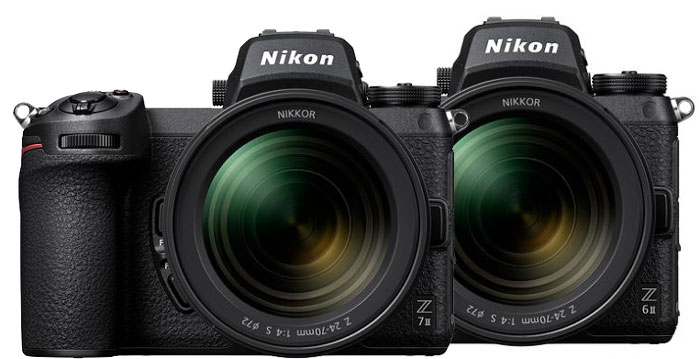
Finally, Nikon Z6 II and Nikon Z7 II camera also announced, both cameras get Dual expeed image processor for enhanced processing power. With the intro of the new image processor, both cameras now can record 4K videos at 60p. And the Artificial AF tracking of both camera significantly improved despite of the fact that the number of AF points remain the same. Continuous shooting speed of both the camera also imporoved, Nikon Z6 II now shoots at 14 FPS ( vs 12FPS) and Nikon Z7 II now at 10FPS (vs 9 FPS). And not only processing power the buffer capcity of the camera also increeased upto 3X.
Get Nikon Z6 II from B&H
Get Nikon Z7 II from B&H
Nikon Z6 II and Nikon Z7 II Press Release
THE NEXT CHAPTER OF Z IS HERE: NIKON DELIVERS MORE OF EVERYTHING WITH THE NEW Z 7II AND Z 6II FULL-FRAME MIRRORLESS CAMERAS
The High-Resolution, High Performance Z 7II and the Versatile, Multimedia Powerhouse Z 6II Offer More Innovation, Power, Speed and Precision to Step into a New Era of Creative Freedom
MELVILLE, NY (October 14, 2020) – Today, Nikon Inc. unveiled the next chapter of the Z series with the arrival of two new full-frame mirrorless cameras that significantly improve upon the previous generation by adding more power, more features and more of what users want. The ultra-high-resolution Z 7II is for those with an eye for impeccable details, offering professionals and advanced photographers a powerful tool to capture immense resolution in every shot. For dynamic creators who need a device as versatile as they are, the Z 6II balances powerful performance and an expert-level multimedia feature set to bring any creative vision to life. Together, the Z 7II and Z 6II, along with new accessories, expand the Z series into a more robust mirrorless platform, incorporating many performance and design upgrades while maintaining the most popular features of their award-winning predecessors.
“As we evolve the Nikon Z series into the future, we continue to strengthen the platform, keeping the needs of our customers at the center of every new innovation and added feature,” said Jay Vannatter, Executive Vice President, Nikon Inc. “These are the cameras that many have been waiting for from Nikon. The new Z 7II and Z 6II demonstrate our commitment to listening to customer feedback, while also establishing the new standard for performance, quality and versatility for every type of creator, photographer or filmmaker.”
The Nikon Z Mount – The Most Light Means the Best Images
The Nikon Z mount is larger than any other full-frame mount, letting in significantly more light for the best possible image quality. The wider mount also allows for radical new concepts in optical design, giving lens designers the flexibility to create NIKKOR Z lenses with more edge-to-edge sharpness than ever thought possible. These new cameras expand the possibilities of the superior Z mount with performance upgrades designed to improve the quality, workflow and shooting experience for Nikon Z series users.
New Features and Upgrades: Customer-Focused Innovation Drives Creativity
- Dual EXPEED 6 Processors for Twice the Power: At the heart of the new Z 7II and Z 6II is the implementation of two EXPEED 6 image processors, turbocharging performance to improve processing speed and increasing burst capability for stills — all while increasing power efficiency.
- Built for Confidence, Built for Creators: The cameras retain robust weather sealing, user-focused ergonomics and an intuitive interface– distinctions that Nikon users have come to rely on. The new models also offer improvements such as dual memory card slots, with one CFexpress (type B)/XQD slot and one SD card slot (UHS-II), for maximum versatility and peace of mind. Users will also benefit from more power and comfortable vertical shooting with the addition of the optional new MB-N11 battery pack with vertical grip.
- Enhanced Focus System: With an updated, feature-rich autofocus system, the Z 7II and Z 6II quickly acquire focus and track subjects throughout the frame. For more precise autofocusing, Eye and Face-Detection AF is now available in the Wide-Area AF (L) mode, which works to avoid focusing on distracting elements by isolating selected portions of an image. Additionally, both models have an improved low-light AF detection range that is capable of acquiring subjects in challenging lighting.
- Advanced Video Capabilities: Expanding the boundaries of 4K UHD video, the Z 7II and Z 6II enhance video output with an increased frame rate of 4K (UHD) 60p, plus Eye-Detection AF mode when recording video. While currently available in the Z 7II, the 4K 60p option is planned to be available in a free firmware upgrade for the Z 6II in February 2021. As a result of pro user feedback, the models also allow users to reverse the focus ring orientation on the fly, benefitting those who are used to manual focusing using traditional cine lenses on set. For added flexibility in post-production, 10-bit N-Log and HDR (HLG)1 output offers more detail, dynamic range and contrast in captured footage, while the optional 12-bit ProRes RAW upgrade2 delivers greater creative control for professionals and advanced videographers.
Nikon Z 7II: Absolute Immersive Masterpiece
The Z 7II promises high-resolution stills and video for discerning users who need ultimate performance to achieve exceptional image quality in every shot. A powerful upgrade to the Nikon Z 7, the Z 7II is the ideal camera for capturing highly detailed portraits, landscapes, weddings, events, and commercial photography when there is no compromise on image quality.
- The Z 7II features a 45.7-megapixel backside-illuminated (BSI) CMOS sensor to help capture intense detail, ultra-shallow depth of field and clarity that overwhelms. The exceptionally clean native ISO range from ISO 64 to 25,600 offers the functional freedom to shoot at wide apertures in bright light or in-studio with minimal noise.
- With up to 10 fps maximum shooting speed at full resolution in Continuous H (extended)3, the Z 7II can handle fast burst rates with more than triple (3.3x)4 the buffer capacity of the Z 7 (in 12-bit lossless compressed RAW).
- The Z 7II’s 493 on-sensor phase-detect autofocus points cover 90 percent of the frame, quickly and accurately acquiring subjects, even at its far edges. The Z 7II is capable of acquiring focus in half the light (as low as -3 EV5), making it the reliable tool for low-light scenes such as weddings and indoor events.
Nikon Z 6II: True Multimedia Powerhouse
The Z 6II is the most versatile Z series camera yet, balancing speed, power, low-light ability, and advanced video features for dynamic creators who need pro-level performance and reliability.
- Building on the vast pro-caliber video capabilities of the Z 6, the Z 6II is capable of recording 4K UHD video quality with full pixel readout, demonstrating the advantages of mirrorless technology. The camera is capable of a variety of frame rates, including 4K UHD 60p6 with full pixel readout, which is planned to be available in February 2021 via a firmware update. It is also capable of 4K 30p, as well as Full HD 120p for slow motion.
o Built with videographers in mind, the Z 6II’s AF speed and tracking sensitivity is adjustable to meet creative needs, while the focus ring is also reversible. Useful indicators for focus peaking, zebra stripes and timecodes help capture the best possible footage in-camera and simplify workflow.
o For both models, 10-bit output to an external recorder with N-Log is possible as well as the capture of new HDR (HLG) video and output in 12-bit ProRes RAW with the optional upgrade. For upgrade customers, additional support will also be included for Blackmagic RAW when using the Blackmagic Design Video Assist 12G HDR recorder. This upgrade will also be provided for existing customers who have already purchased a ProRes RAW upgrade for the Nikon Z 6 or Z 77.
o The Z 6II and Z 7II are the first Nikon cameras to support Eye-Detection AF and Animal-Detection AF with video recording, enabling continuous focus on the eyes of humans, dogs, and cats.
- The Z 6II features a 24.5-megapixel BSI CMOS sensor for crisp stills and video capture with impressive detail, ultra-shallow depth of field and impressive low light performance. To confidently shoot in challenging light, the camera has an impressive ISO range from ISO 100–51,200, expandable up to ISO 204,800 equivalent.
- Thanks to the addition of dual EXPEED 6 Processors, the Z 6II boasts a fast 14 fps3 continuous shooting speed, providing quick performance for capturing action, with more than 3.5x the buffer capacity of the Z 64.
- The Z 6II’s enhanced AF system features 273 on-sensor phase-detect autofocus points for easy subject acquisition and tracking throughout the frame, including at the edges. Capable of focusing in half the light (down to -4.5 EV5), the Z 6II easily acquires focus in extreme low light scenarios, making it an ideal option for capturing nightscapes and events.
The Nikon Experience: Reliability & Workflow
Both the Z 7II and Z 6II adopt the Z series’ durable Magnesium Alloy build and extensive weather-sealed design for all-around protection in rugged environments. Both models focus on improved workflow with intuitive features and controls that enhance the creative process.
- The Z 6II and Z 7II enable convenient iMenu access for autofocus modes such as the new Wide-Area AF (L) mode for people or animals, with built-in Eye and Face-Detect autofocus, allowing users to quickly switch between controls while shooting.
- USB power delivery can be enabled while the cameras are in use, drawing power from the USB source first, to preserve camera battery8 or charging while the camera is turned off (when using the EN-EL15b or EN-EL15c battery).
- The Z 6II and Z 7II also include in-camera exposure choices for up to 900 seconds for capturing super slow-shutter nighttime cityscapes and astrophotography.
- Both the Z 6II and Z 7II are compatible with the Nikon Webcam Utility software beta, ensuring seamless webcam functionality for all occasions. When using this function with a USB-C cable, power can be supplied to the camera to power it while using it as a webcam, making turnkey webcam functionality as easy as plugging in a USB-C cable.
- In addition to its seamless file transfer and remote camera control, the Nikon SnapBridge app can be used to streamline the firmware update process by wirelessly sending the latest firmware file directly to the Z 7II or Z 6II for updating, no card reader or computer necessary.
- Portions of the information display can be hidden with still-image shooting and video recording, allowing an unobstructed view of the scene.
- In-camera vibration reduction (VR) provides camera-shake compensation equivalent to 5-stops9.
A Rapidly Expanding Ecosystem
Nikon is committed to expanding the NIKKOR Z lens lineup to complement the exceptional power of these latest mirrorless cameras, with 16 NIKKOR Z lenses currently available, including the recently announced NIKKOR Z 50mm f/1.2 S and 14-24mm f/2.8 S. The lineup will expand to include a total of 24 innovative optics by the end of 2021, providing Z series users with the tools to achieve the highest level of optical excellence.
The ecosystem is also expanding with more accessories, including the addition of the new MB-N11 Power Battery Pack with vertical grip for the Z 6II and Z 7II. This new grip features convenient external controls for additional manual operation and customization, along with more comfortable portrait orientation shooting. While battery life is extended up to 1.9x10 (CIPA standard), the battery grip also includes a hot-swappable chamber, granting users the ability to remove or replace one battery while shooting for uninterrupted power – a true benefit for content creation. The vertical grip also adds a secondary USB-C port for standalone charging and simultaneous communication with other devices.
Additionally, Nikon has announced new wireless transceivers for remote triggering and radio-controlled lighting, the WR-R11a and WR-R11b. The new wireless transceiver units use radio frequencies to communicate and are designed for users who need minimal release lag when shooting wirelessly, or those that use one or more remote flashes (AWL). The user can control additional remote cameras simultaneously using the WR-T10 remote, or via a main camera equipped with the WR-R11a/b. The WR-R11a uses a 10-pin connector, while the WR-R11b connects through the accessory terminal that can be found on Z series mirrorless cameras and select DSLRs. The units can also trigger Nikon radio-controlled flash units, such as the popular SB-5000 Speedlight, without the need for an additional receiver unit. Engineered with a new hinged design, the WR-R11a increases durability when attached to a camera.
Pricing and Availability
The Nikon Z 7II will be available in December 2020 in two configurations, body-only for a suggested retail price (SRP) of $2,999.95* and a one-lens kit with the NIKKOR Z 24-70mm f/4 for an SRP of $3,599.95*. The Nikon Z 6II will be available in November 2020 and will also be available in two configurations, body-only for an SRP of $1,999.95*, and a one-lens kit with the NIKKOR Z 24-70mm f/4 for an SRP of $2,599.95*. The MB-N11 Battery Pack with vertical grip will be available in November 2020 for an SRP of $399.95. The WR-R11a and WR-R11b (sold separately) will be available in November 2020, and each will have an SRP of $199.95 for the controller only. They will also be available as a set including the controller and the WR-T10 wireless remote controller for an SRP of $279.95.
*SRP (Suggested Retail Price) listed only as a suggestion. Actual prices are set by dealers and are subject to change at any time.
Other trade names mentioned in this document are trademarks or registered trademarks of their respective holders.
Nikon Z6 II and Z7 II Full Specification PDF
By admin, on October 13th, 2020
Finally, we have the leaked images of the Nikon Z6 II and Nikon Z7 II camera, a detailed set of specifications on its way, and will publish it soon as we get it. More images gallery link below
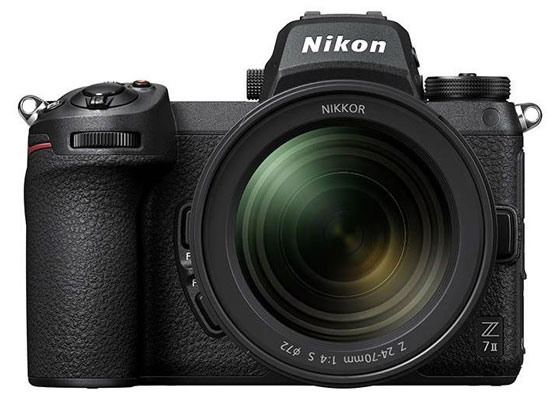 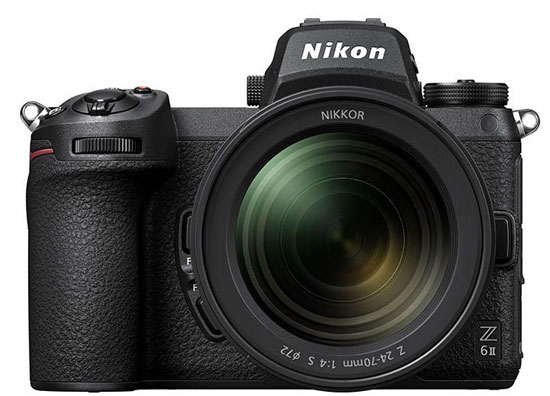
More Images here – Nikon Z6 II and Z7 II gallery Link
More updating Coming soon stay with us
Follow us on our social pages FACEBOOK | TWITTER | INSTAGRAM to get live news + Nikon rumors 24X7
By admin, on September 29th, 2020
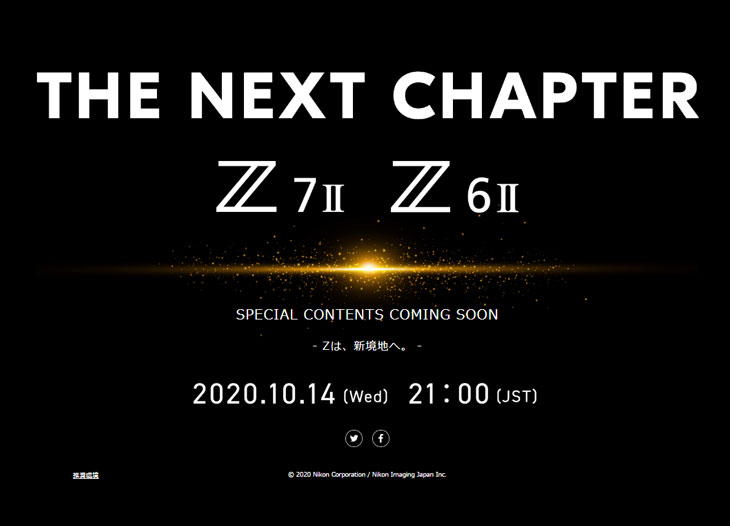
Finally, Nikon unveiled the teaser website of the Nikon Z6 II and Nikon Z7 II camera. The camera will become official on October 14, 2020. So, finally, the wait is over. We have already shared the possible set of core specifications of the upcoming cameras.
We will update you soon as we get any info, stay with us.
Follow us on our social pages FACEBOOK | TWITTER | INSTAGRAM to get live news + rumors 24X7
|
KEEP THIS BLOG ALIVE - Support New Camera Buy Canon Lenses, Buy Music CD or Digital Camera at amazon it helps this site, and you do not pay anything extra, it is just a way to help support this site.

|













